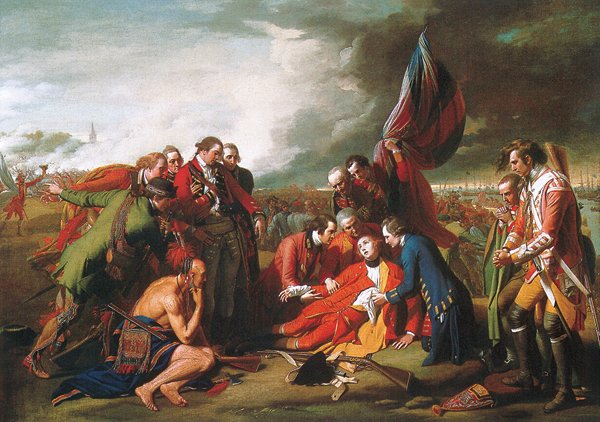Benjamin West,
The Death of General Wolfe, 1770.
Oil on canvas, 152.6 x 214.5 cm.
National Gallery of Canada, Ottawa.
The talent with which the two were endowed, the family likeness in their models, all of them English, have deceived many superficial observers. Nevertheless, the distinctions between them are fundamental ones, and were produced by the application of principles in direct opposition to one another.
It is by the artifice of a perfected science that Reynolds obtains such striking effects in his portraits. He forged for his own use a complete armoury of weapons, a magazine of rules and well-tried systems, which he had gathered and selected by a careful study of the old masters; he must have so much shadow, so much light; he systematically avoids this or that tint, and by excessive skill in execution he succeeds in concealing his poverty of conception.
Gainsborough, on the other hand, regards his model in the same way as he regards nature. It is the model which, in each new work, furnishes him with fresh artistic ideas. He sees for himself those half tint reflections which Reynolds calculates beforehand. Guided by an inherent dignity and an instinctively correct taste, he never descends, although ever truthful, to the trivialities of Hogarth, who is quite as truthful, but in another way. Hogarth shows off the bad side of his subject to make it all the more open to censure; his portraits, too, although of a striking resemblance, as we are told by contemporary spectators, are exaggerated, repugnant, and, to say the least, vulgar.
Gainsborough strove to take in all that was noble and pure in his sitters, and thus, without flattering, he gives every work produced by his hand a particular character of ideal dignity combined with truthfulness. He holds himself as far aloof from the skilful trickeries of Reynolds as from the naïve coarseness of Hogarth; he is innately true. One can now well understand how, without denying his talent, pedants of every kind (for there is a pedantry of ugliness) ranked in the second class this man, who was utterly unable to enter into and conform to their aesthetical formulas.
